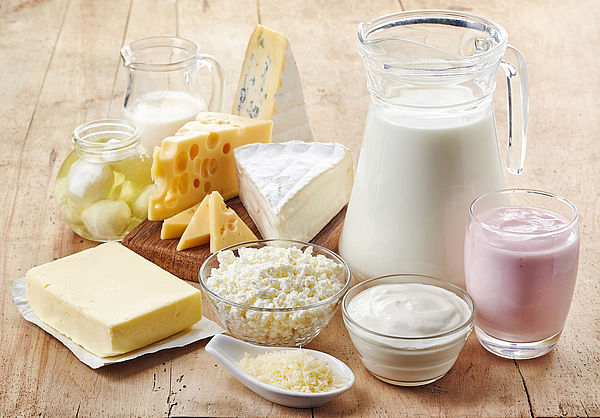The food matrix
The ‘food matrix’ describes a food in terms of both its structure and its nutrient content, and how these interact together. Foods consist of a large number of different nutrients that are contained in a complex physical structure. The nature of the physical structure together with the mix of nutrients and bioactives can impact nutrient digestion, absorption and metabolism, affecting the overall nutritional and health properties of the food1–3.
Whole foods or single nutrients
Nutrition research has traditionally focused on identifying the specific mechanisms and health impact of single nutrients – for example, saturated fatty acids in relation to blood lipids and cardiovascular disease (CVD). It has often then followed that nutrition policy is based on such associations – for example, recommendations to limit food containing saturated fatty acids in order to reduce CVD risk.
More recently, however, nutrition research has shifted focus to examine the relationship of whole foods with health, including dairy foods. This is based on the premise that we do not eat nutrients in isolation but as foods, and in meals, and as part of dietary patterns. From this research, a different picture has emerged than might be predicted from the nutrient content of the foods alone.
Cheese is a good example: despite its saturated fat (and salt) content, the majority of epidemiological studies report that cheese consumption does not increase the risk of CVD and may, in fact, be beneficial4,5. Researchers have characterised this as a ‘food matrix’ effect1. This recognises that the health effects of a food are much more complex than that of a single nutrient it contains or even a few nutrients. Rather, they are a function of both its structure and its nutrient content, and how these interact together.
Complex dairy matrices
Milk and dairy products are complex foods naturally containing numerous nutrients and bioactive components. The rich matrix of nutrients includes high–quality protein, fat, lactose, calcium, phosphorus, potassium, iodine, vitamin B12, riboflavin (vitamin B2) and many other vitamins and minerals.Dairy is also rich in bioactive components, and fermented dairy foods contain bacteria that produce beneficial short–chain fatty acids (SCFAs) and vitamin K2, along with bioactive peptides3,4.
The nutritional and functional complexity in dairy food matrices is exemplified by milk fat, which has over 400 different fatty acids with different physiological properties6. Components of the membrane which encloses the fat droplets in milk (the milk fat globule membrane; MFGM) also have functional effects7,8.
The matrices of different dairy foods will differ in the amounts and combinations of nutrients, including proportions of whey and casein proteins, fat and bioactives. Within a dairy food category, production methods and processes will also alter the composition of the matrix – for example, the length of ripening time for cheese affects the extent of protein breakdown and production of bioactive peptides9.
In addition to nutritional matrices, dairy foods also have complex physical matrices: from the solid matrix of cheese, to the gel–like structure of yogurt to liquid milk. Again, these differ within dairy categories – for instance, methods of production and ripening will influence the structure of the many different types of cheese.
The structure of a food matrix can have an impact on factors such as nutrient absorption and digestion and, therefore, the metabolic response after eating. For example, differences in the structure and texture of dairy food matrices can influence digestion kinetics and uptake of lipids10. The matrix structure can also influence protein absorption and digestion with differences reported, for example, between casein contained in the milk matrix and given as a supplement11.
More than the sum of its nutrients
Given the complex nature of dairy matrices, it is perhaps not surprising that there is increasing evidence that the health effects of dairy foods extend beyond their constituent parts. Evidence to date suggests that milk and dairy matrices have specific beneficial effects on cardiometabolic health, body weight, and musculoskeletal health1,3.
For example, the positive effects of milk and dairy foods on bone health is more than simply a ‘calcium effect’ as is often assumed. Interactions of calcium, protein and phosphorus with each other and with lactose and bioactive peptides in the dairy matrices are likely to explain dairy’s beneficial effects; vitamin K2 may also be involved in fermented dairy foods such as cheese and yogurt. Similarly, the blood pressure lowering effect of milk may be the result of interactions between calcium, potassium, phosphorus and bioactive dairy peptides in the milk matrix.
In relation to cheese, the explanation for the potential beneficial rather than harmful effects on CVD may again lie in interactions of the components and structure of the cheese matrix including calcium, phosphorus, the milk fat globule membrane and starter cultures, which modify saturated fatty acid–induced increases in blood lipids.
More research is underway to investigate the health effects of the dairy matrix and to unravel the mechanisms and pathways through which the different components work together. However, the matrix concept underlines the importance of considering the health effects of milk and dairy as whole foods, alongside the individual components they contain. This is particularly important in relation to public health policy, and there is a growing recognition that dietary guidance should be based on evaluation of the health impact of whole foods, including dairy, rather than on single nutrients alone.
